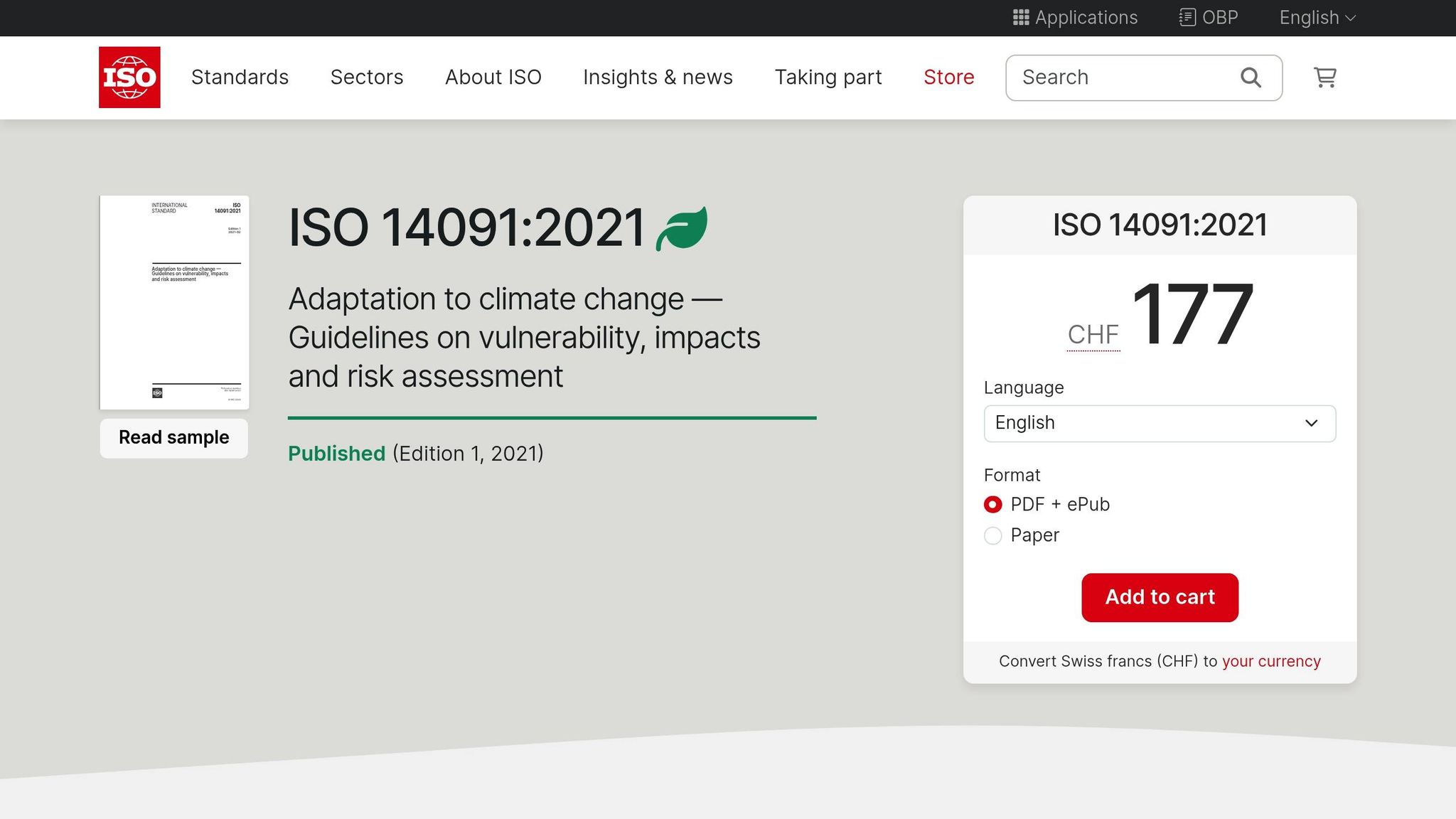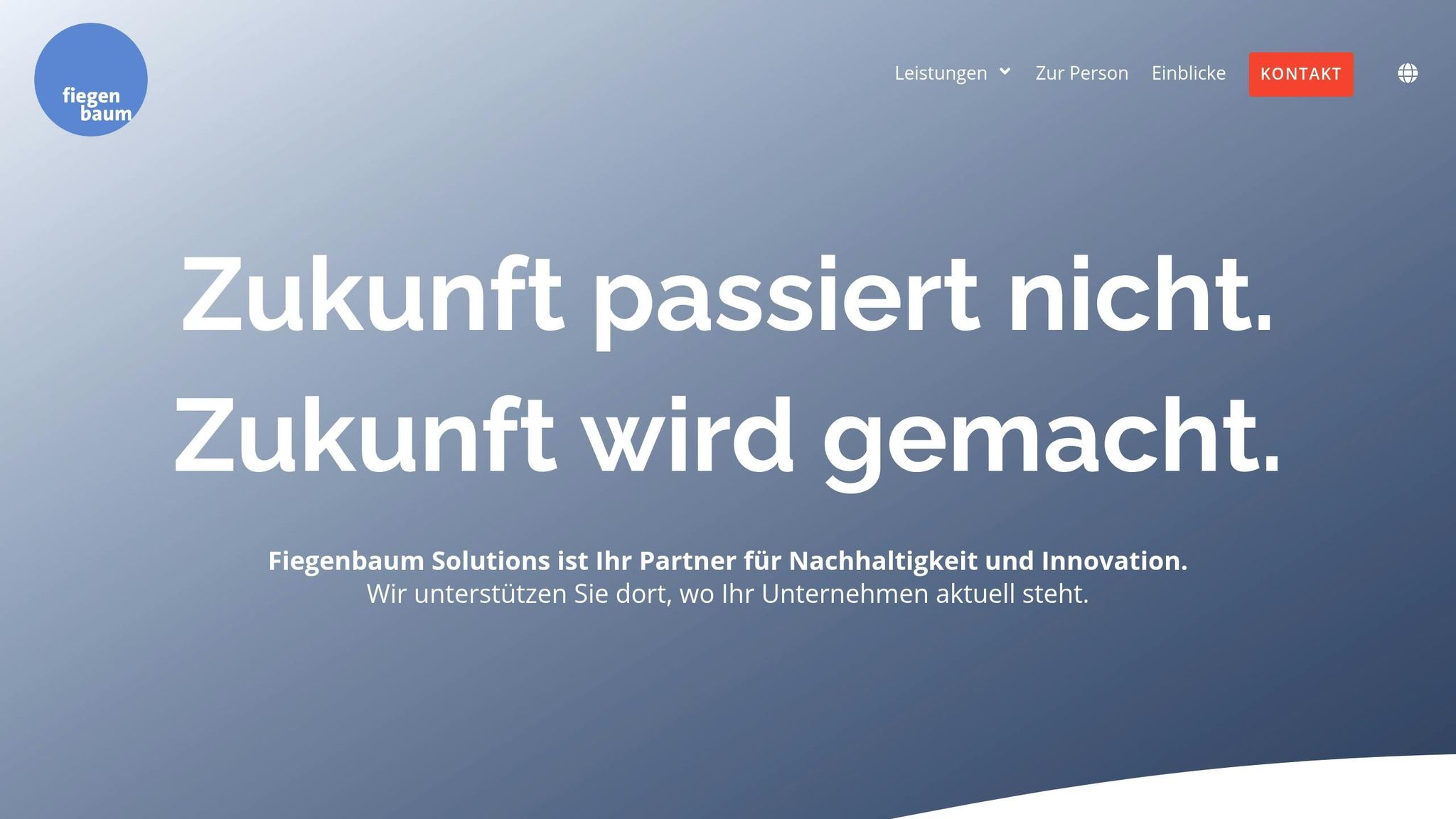Climate Risk Tools Every VC Must Use in 2026 | Portfolio Protection Guide
Climate risks are no longer a thing of the future – they directly affect you as venture capital...
By: Johannes Fiegenbaum on 9/19/25 10:45 PM

How do you protect your company from climate risks? The standard ISO 14091 provides you with a clear guide to assess climate risks such as floods, heat waves, or droughts and derive targeted measures. With the growing importance of sustainability reports and legal requirements like the CSRD, a structured climate risk analysis becomes indispensable.

An example shows how effective ISO 14091 is: The municipality of Geestland identified the most important climate risks within six months using an adapted tool – with minimal effort. This approach is also applicable for companies of any size.
The first step? A clear goal definition and integration into your existing management systems. This way, climate risk management becomes not just an obligation, but also an opportunity for long-term success.
ISO 14091 is aimed at organizations of all sizes and industries that want to strengthen their resilience against the impacts of climate change. Particularly for companies obligated to comply with the CSRD (Corporate Sustainability Reporting Directive), the standard provides a solid methodological foundation for developing the required reporting data.
The standard follows a practice-oriented approach that supports organizations in identifying their vulnerabilities related to climate change. The goal is to avoid or at least reduce negative impacts. These principles form the foundation for the comprehensive approach of the standard.
As part of the ISO 14090 series, ISO 14091 provides not only general guidelines and requirements, but also a methodological foundation for conducting climate risk analyses that are particularly relevant for CSRD compliance.
Success in implementing ISO 14091 depends crucially on the quality and completeness of available data. For assessing short-term risks – within the next ten years – current climate hazard data from the last two decades, including extreme weather events, is indispensable.
When it comes to activities with a longer lifespan of more than ten years, future-oriented climate projections come into play. These are based on RCP scenarios (IPCC AR5) and SSP scenarios (AR6), which consider various possible developments. German companies can draw on the expertise of the Federal Environment Agency (UBA). The UBA provides a summary of ISO 14091 and supplements it with recommendations specifically tailored to German framework conditions.
For precise identification of climate risks, it's recommended to use high-resolution local climate data as well as site-specific operational and financial data. This data is particularly helpful for assessing risks at individual production sites that are crucial for revenue, operating expenses (OpEx), or investments (CapEx).
Sensitivity and exposure data also play a key role. They show how strongly facilities such as buildings or infrastructure could be affected by climatic hazards. These assessments are often based on the impacts of similar hazards in the past and enable possible consequences to be derived by comparing with similar locations or companies.
To make complex relationships and indirect impacts visible, so-called impact-chain data is required. It shows how hazards can turn into concrete risks and helps identify key starting points for adaptation measures within business processes.
In addition to the availability of high-quality data, organizational alignment is also crucial.
Simply collecting technical data is not enough – close collaboration between departments is indispensable. Climate risks affect the entire company, and isolated consideration of individual areas inevitably leads to incomplete risk assessments.
Here, support from the management level is of central importance. Without clear commitment and active participation from senior management, there's a risk that implementation remains merely a formal compliance exercise. An interdisciplinary project team that brings together experts from risk management, sustainability, operations, finance, and IT ensures that all relevant perspectives and data are included.
Furthermore, careful time planning is required. Depending on company size and complexity, implementation can require several months of intensive work. A realistic timeline should consider both data collection and internal coordination.
Another important point: ISO 14091 should be integrated into existing management systems from the beginning – whether in risk management, environmental management, or quality management systems. Seamless integration into existing processes enables synergies to be utilized and keeps implementation effort efficient. This ensures that measures are not only meaningful but also sustainably embedded in daily business operations.
After preparation, it's now time for practical implementation. With the necessary organizational measures in the background, a clearly structured plan follows to successfully implement ISO 14091 in your company.
Clearly establish the assessment framework: Which target areas, locations, business areas, and time periods should be considered? Both CSRD (Corporate Sustainability Reporting Directive) requirements and your company-specific goals should be included. Also decide whether you want to examine physical risks, transition risks, or both. A clear goal definition ensures that the analysis is neither too superficial nor too extensive.
Using current regional climate data, identify relevant hazards such as heavy rainfall, heat, drought, or storm damage. ISO 14091 provides you with a structured approach to better understand vulnerabilities and risks related to climate change. You should consider both acute events like floods and long-term developments, such as rising average temperatures.
Analyze how vulnerable your facilities, processes, and supply chains are to the identified climate risks. It's important to consider not only direct dependencies but also indirect connections, such as to suppliers in particularly vulnerable regions. This gives you a comprehensive picture of your company's exposure.
Sort the identified risks by probability of occurrence and potential impacts. A risk matrix can help set priorities clearly. Then derive concrete measures to minimize or prevent risks.
Integration into existing processes is crucial. Incorporate the results into your strategic planning, risk management, and the design of climate-resilient supply chains. Review the analysis regularly and adapt it as needed. This way, you can respond in time to new scientific findings or changing conditions and always stay up to date.

Implementing ISO 14091 requires not only technical expertise but also a deep understanding of the German regulatory landscape. This is exactly where Fiegenbaum Solutions comes in: We help you successfully integrate climate risk analysis into your sustainability strategy while taking a strategic approach. Below, we show how we can support you with tailored approaches that seamlessly fit your corporate strategy.
Companies in Germany face a multitude of regulatory requirements – from CSRD and EU Taxonomy to the Supply Chain Act, BaFin requirements, or the Climate Protection Act. These complex regulations require consulting that specifically addresses the challenges of the German market. Fiegenbaum Solutions brings the necessary know-how to establish ISO 14091 not just as a standard, but as an integral part of your sustainability and risk management strategy.
Our approach goes beyond mere compliance with standards: Together with Johannes Fiegenbaum, you develop a strategy that leads from traditional emissions accounting to comprehensive climate risk management. We consider regional climate impacts – such as floods on the Rhine and Elbe – as well as industry-specific risks.
Another advantage: We close knowledge gaps with practical solutions that can be seamlessly integrated into your existing management systems.
Our collaboration is entirely based on your needs. For companies implementing ISO 14091 for the first time, we offer project-based consulting. This includes a clearly structured project proposal with defined scope of work and transparent cost overview. Alternatively, you can rely on retainer agreements for continuous support to develop your climate risk strategy long-term.
Particularly interesting for start-ups and impact-oriented companies: We offer special conditions to build a solid climate risk strategy from the beginning.
These flexible models reflect our practice-oriented approach, which has proven successful in numerous projects.
Thanks to our solid regulatory expertise and practical approaches, we help you integrate the principles of ISO 14091 into your ESG strategies. A particular focus is on life cycle assessments and impact modeling. These approaches provide you with a comprehensive picture of your company's resilience – a solid foundation for sustainable and well-informed decisions.
ISO 14091 represents an important milestone for the German business landscape. It translates abstract climate scenarios into systematic and comprehensible analyses – making climate risk analyses an indispensable tool for companies that want to remain successful long-term.
By combining CSRD requirements with ISO 14091 specifications, German companies not only secure regulatory compliance but also create a resilient foundation for their resistance. The structured methodology of ISO 14091 helps translate complex climate data into clear action recommendations for risk management.
The right time to act? Now. Those who implement the five steps of ISO 14091 lay the foundation for a strategy that not only manages climate-related risks but also recognizes opportunities within them. These steps provide a proven framework that can be flexibly applied to companies of different sizes and industries.
The first step is crucial: The clear definition of the scope and objectives of the climate risk analysis. Once this foundation is laid, a one-time analysis becomes a dynamic process that enables continuous improvements.
In the coming years, climate risk management will become an economic matter of course. Companies that start implementing ISO 14091 today actively shape this development. The consistent integration of the presented steps makes climate risk management an integral part of your corporate strategy – and thus a real competitive advantage.
Integrating ISO 14091 into existing management systems like ISO 14001 offers companies the opportunity to develop a comprehensive strategy for managing environmental and climate risks. Processes and requirements of different standards can be cleverly linked together to create synergies.
A crucial aspect is analyzing the specific risks and opportunities that are relevant to the company. These should be seamlessly integrated into existing workflows to promote sustainable adaptation to climate risks while increasing efficiency. Particularly important: involving all affected departments early on. This minimizes possible hurdles and ensures smooth implementation of standard requirements.
An integrated management system that combines multiple standards not only saves time and resources but also helps comply with legal requirements and strengthen long-term resilience against the consequences of climate change. Companies benefit doubly – through efficiency gains and increased security.
For precise climate risk analysis according to ISO 14091, climatological data, environmental and weather information, and socioeconomic factors play a central role. This data can be obtained, for example, from national weather services, authorities like the Federal Environment Agency, or specialized research institutes. International organizations like the World Meteorological Organization also provide relevant information.
It's crucial that the data is current, regionally adapted, and historically reliable to enable realistic risk assessment. Access to this information often occurs through data portals, targeted inquiries, or paid subscriptions. Pay close attention to the quality and currency of sources to ensure reliable and well-founded analyses.
To win your leadership over for implementing ISO 14091, you should actively involve them in the process from the beginning. Clearly show what benefits a standardized climate risk analysis brings – such as increased company resilience and compliance with legal requirements like the CSRD.
Connect your measures directly to corporate goals and make the associated opportunities and risks tangible. Particularly effective is open communication that highlights measurable benefits like cost savings or reduced risk exposure. This creates not only clarity but also motivation.
A well-thought-out strategy, supplemented by regular updates on progress, strengthens leadership confidence. This secures their long-term support and commitment.

ESG & sustainability consultant specializing in CSRD, VSME, and climate risk analysis. 300+ projects for companies like Commerzbank, UBS, and Allianz.
More aboutClimate risks are no longer a thing of the future – they directly affect you as venture capital...
Starting in 2026, new standards for climate risk analyses will apply in the EU: ISO 14091 and the ...
How can companies better assess climate risks systematically and meet regulatory requirements? The...